In the 1990’s a new type of dry insulation technology made of synthetic materials was introduced in China for high-voltage current transformers. This technology used no oil or gas and no paper, instead using PTFE (PolyTetraFluoroEthylene) film as the main insulation for the primary condenser core. PTFE is an excellent electrical insulation material with an extremely low dissipation factor that remains stable over time. The low and steady dielectric loss of PTFE insulation along with its partial discharge characteristics, which typically test at ˂ 1 pC provides an insulation structure with a much lower deterioration rate over time. Since its introduction in the 1990’s this dry type technology has an in-service population of over 25,000 units worldwide.
This article will review the results of a recent dissection analysis study undertaken by the China Southern Power Grid on a 110 kV dry type HV DryShield® current transformer that had been in operation for 20 years on their grid. They were still in operation when taken out for this assessment. This study repeated the full series of factory acceptance tests followed by a dissection inspection of the interior and exterior insulation systems.
The climate in this coastal industrial region is subtropical, hot and humid a large part of the year with an aggressive marine atmosphere and a high level of pollution. A very challenging environment for power grids.
The specifications of the study current transformer are:
- Nominal voltage rating – 110 kV
- Maximum voltage rating – 126 kV
- Short circuit rating – 31.5 kA
- Ratio – 600x1200-5 A
- 4 cores: 1 metering core 0.5, 30 VA and 3 protection cores 5P30
- Power frequency withstand – 185 kV
- Lightning impulse – 450 kV BIL
The testing and dissection study revealed a current transformer that had deteriorated very little over its 20-year in-service period. The key findings from the study are summarized below.
Third-Party Testing
The testing included:
- error measurement
- V-A characteristic measurement
- insulation resistance measurements (secondary windings to ground and capacitive tap to ground)
- power frequency withstand test (secondary windings to ground and between the secondary windings)
- measurement of capacitance and dielectric dissipation factor before and after the power frequency tests
- impulse voltage withstand test and measurement of partial discharge (which measured 3 pC at 87 kV)
The third-party tests showed a current transformer that was still qualified for service.
The Dissection Inspection
The surface of the silicone rubber sheds showed obvious signs of aging, but the tensile strength and hydrophobicity still tested qualified for service.
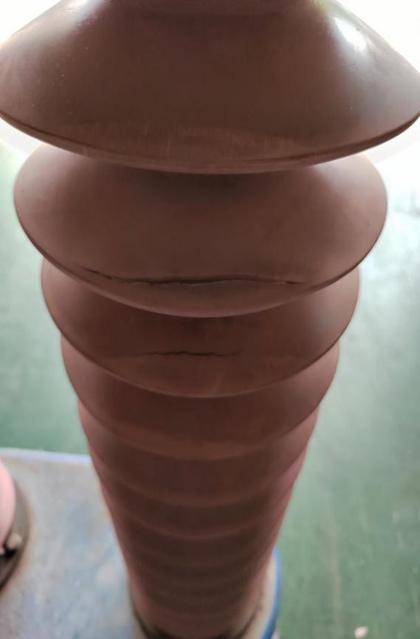
Silicone Rubber Sheds
After removing the silicone rubber sheds the heat shrink tubing underneath was inspected. No looseness, gaps or cracks were found.
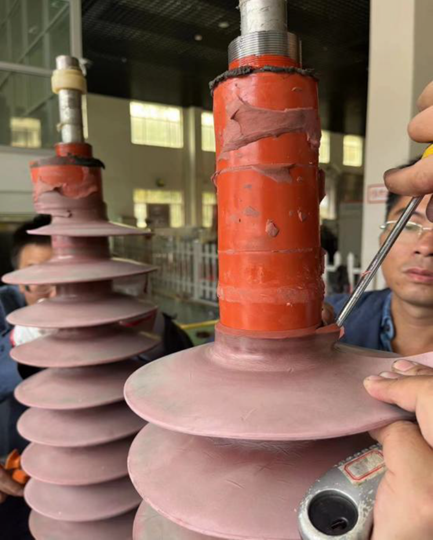
Heat Shrink Tubing
The black self-adhesive silicone rubber tape under the heat shrink tubing was inspected and found to still have good elasticity and adhesion.
Silicone Rubber Tape
The PTFE film and metal screen (aluminum foil) showed no signs of discharge or discoloration. The welding of the capacitive tap lead to the last metal screen was intact and in good condition.
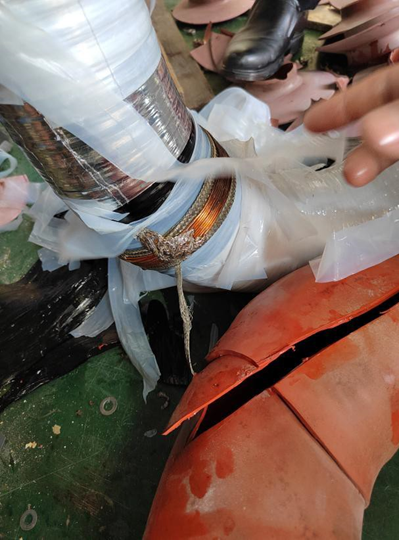
PTFE Film and Metal Screen
There were no abnormalities in the conductive copper rod, insulation tube, and reinforced stainless-steel pipe in the primary winding U-shape conductive rod.
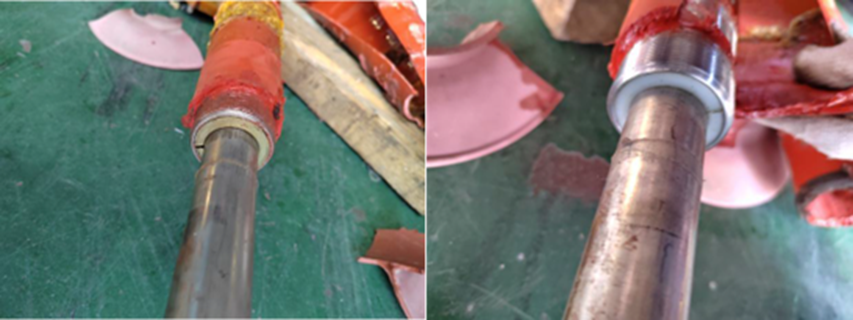
Primary Winding
The secondary windings, although slightly dirty, showed no signs of damage or looseness. The secondary terminals and windings were well insulated to the ground.
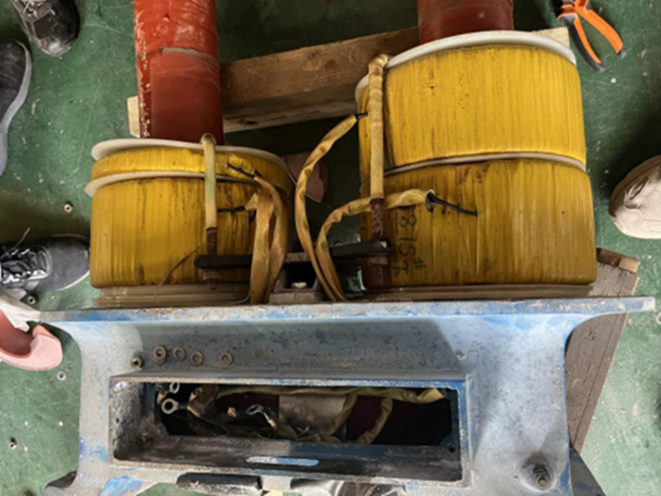
Secondary Windings
The base box showed traces of moisture. Note: The base box design includes a small drainage hole at the bottom to prevent condensation and accumulation of water inside the base box.
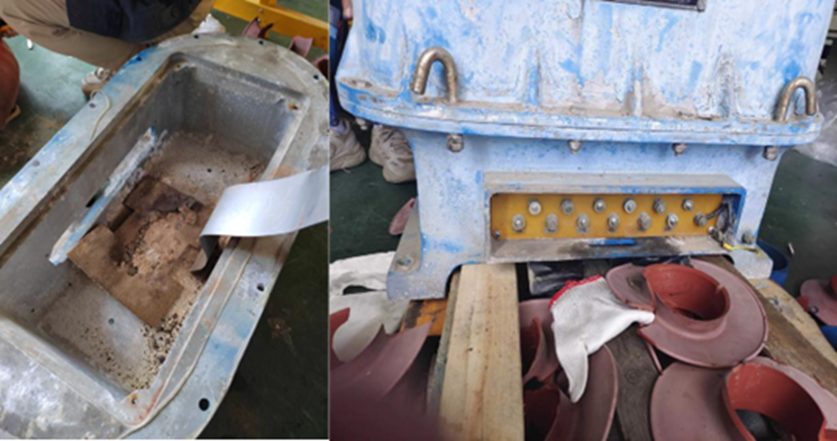
Base Box
The dissection inspection showed a current transformer still in good condition after operating outdoors with no maintenance checks for more than 20 years.
It is worth noting that since this early definition of the HV DryShield® Current Transformer, some components have been further strengthened, such as a higher grade of silicone rubber (not available at that time) and enhanced water-proof sealing of secondary windings.
